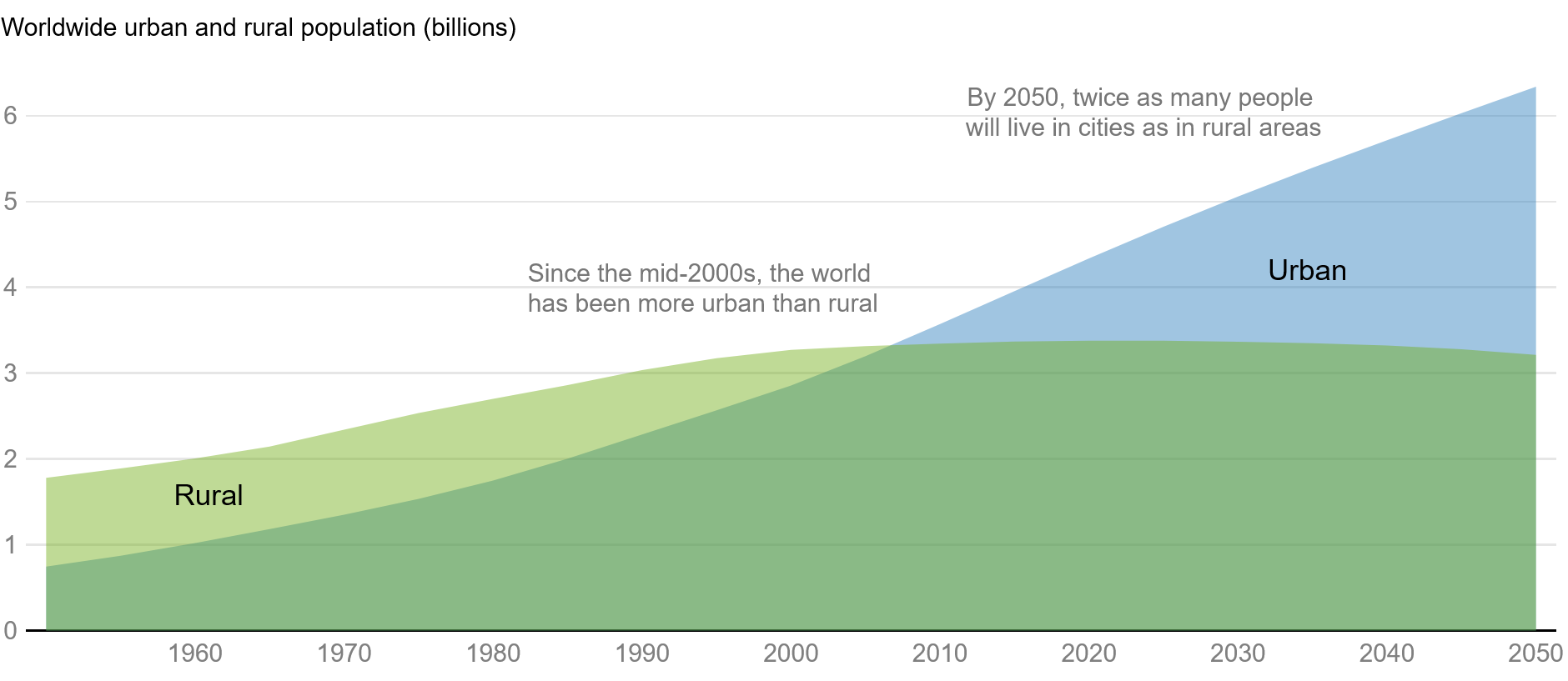Sustainable cities are cities that are designed and managed to meet the needs of their present population without compromising the ability of future generations to meet their own needs. This includes designing and building cities with a focus on environmental, social, and economic sustainability.They are designed to be more efficient in their use of resources, to reduce pollution and waste, and promote social and economic well-being for all residents.

Sustainable cities also prioritize the use of clean and renewable energy sources, promote active transportation options such as walking and cycling, and encourage the development of green spaces and community gardens. Additionally, sustainable cities often have policies in place to support affordable housing, job opportunities, and access to education and healthcare.
By transforming all urban centers into renewable and conscientious living areas, we are increasing the quality of life for all current residents and investing in a healthy world for generations to come.
Why should we worry about it?
With a world population growing rapidly continuing with our usual status quo is not an option. It is more critical than ever before to transform urban areas and address the current and future challenges to health and sustainability we face.
Cities are home to about 55% of the world’s population and it is projected to increase to 68% by 2050 (United Nations, 2018. 2018 Revision of World Urbanization Prospects, D.o.E.a.S. Affairs, Editor. 2018, UN: New York, USA.). With energy consumption relying heavily on fossil fuels that accounts for around 70% carbon emissions worldwide, it presents a serious issue, not only to the quality of air, but to all biodiversity around it.

Source: UN World Urbanization Prospects
A lot of this growth is happening in emerging cities in Asia and Africa, which provides an opportunity to create the right infrastructures towards sustainable growth. However, it is also important to tackle this issue in established urban areas.
Cities offer an incredible opportunity for synergy between health and environmental actions due to the concentration of collective economic, social and technological capacities for innovation. However, urbanization is also a big driver of environmental impact, with detrimental consequences for human and natural systems. For instance, urban development greatly influences the risk of communicable and non-communicable diseases as well as consumption, production and waste, poverty and pollution on a global scale.
How Urban Change works
When it comes to sustainably transforming cities, there are three key areas that must be discussed:
1. Governance and Planning
Governance and planning play a crucial role in the development and management of sustainable cities. Effective governance is necessary to ensure that the needs of all residents are taken into account and that sustainable development policies are implemented and enforced. It must involve both private and public sectors to come up with agreements in how they shape their surroundings and how they operate. This planning must additionally consider long-term environmental, social, and economic impacts.
This can include the integration of green infrastructures, the promotion of active transportation options, and the development of affordable housing. Effective governance and planning also require collaboration and coordination among different levels of government, as well as the private and non-profit sectors. This can help to ensure that sustainable development policies and actions are integrated and aligned across different sectors and jurisdictions, maximizing the overall impact and benefits of sustainable cities.
2. Innovation and Business
Innovation and business play a vital role in the development and management of sustainable cities. Businesses and entrepreneurs can drive innovation and create new technologies and solutions that promote sustainable urban development. These innovations can range from new clean energy technologies, to sustainable transportation systems and green building design. Furthermore, sustainable business practices and corporate social responsibility can also help to reduce the environmental impact of urban areas while promoting economic growth and job creation.

Business and innovation can also play a role in financing sustainable development in cities. Private sector investment, philanthropy, and impact investing all have major opportunity for impact by funding sustainable urban projects and initiatives, complementing government funding and resources. By creating a conducive environment for sustainable business and innovation, cities attract and retain ethical companies and entrepreneurs that prioritize sustainability in their operations and products.
3. Lifestyle and Consumption
We have grown accustomed to a certain lifestyle that is often far from sustainable. Convenient disposable plastics, the affordability of buying a new appliance instead of fixing it, excessive water consumption and food waste, are just a few examples of how we have been abusing our resources.

Promoting a green lifestyle and consumption patterns can help to reduce the environmental impact of urban areas and improve the overall quality of a city. This includes encouraging active mobility, such as walking and cycling, improving and promoting the use of public transportation, and supporting the use of energy-efficient housing, appliances and products. Encouraging these consumption patterns can also include promoting locally-sourced and organic food options, reducing waste and promoting recycling.
The Pace of change
The pace of building sustainable cities can vary depending on a number of factors, including the political and economic context, the level of public awareness, available education, available funding and resources. As mentioned above, there must be a great synergy between the public and private sector, and from each individual as part a community. It is important to note that building sustainable cities is a long-term process that requires complex planning. However, more problems arise as populations rapidly grow, and we must take action sooner rather than later.
Here are some ways you can help develop sustainable cities.
We must keep in mind that the goal is to create cities that present high quality of life for all residents while protecting the environment and its surroundings.
AI for Good Intelligent Cities Project
The Intelligent Cities Project is an initiative designed to help cities comprehend and utilize the potential of new and emerging technologies that can help them enhance the quality of life of its residents. Launched in June 2021, Intelligent Cities Assessment offers any city official a customized report showcasing the potential use areas of artificial intelligence for the municipality’s most pressing issues, such as urban planning and development, education, energy, and healthcare services. Then, we connect city planners with partner organizations and companies that can implement and scale necessary programs.

AI for Good Foundation uses AI based recommendations and solutions, tailored specifically to the demographics and needs of an urban area. Tackling Urban planning, education, energy efficiency, healthcare, food security and community welfare.
You can find more info in our pilot city reports – Kelowna, Canada and Long Beach, California, USA.
Learn more about AI for Good Foundation’s initiatives and help us build economic and community resilience through technology. ai4good.org







